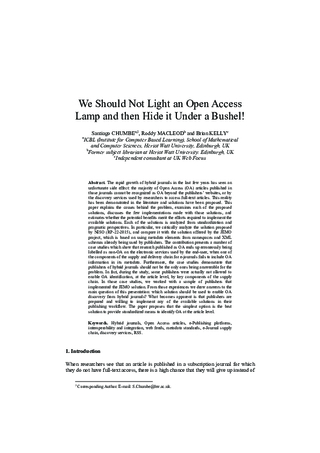The rapid growth of hybrid journals in the last few years has seen an unfortunate side effect: the majority of Open Access (OA) articles published in those journals cannot be recognized as OA beyond the publishers' websites, or by the discovery services used by researchers to access full-text articles. This reality has been demonstrated in the literature and solutions have been proposed. This paper explains the causes behind the problem, examines each of the proposed solutions, discusses the few implementations made with those solutions, and estimates whether the potential benefits merit the efforts required to implement the available solutions. Each of the solutions is analyzed from standardization and pragmatic perspectives. In particular, we critically analyze the solution proposed by NISO (RP-22-2015), and compare it with the solution offered by the JEMO project, which is based on using metadata elements from namespaces and XML schemas already being used by publishers. The contribution presents a number of case studies which show that research published as OA ends up erroneously being labelled as non-OA on the electronic services used by the end-user, when one of the components of the supply and delivery chain for e-journals fails to include OA information in its metadata. Furthermore, the case studies demonstrate that publishers of hybrid journals should not be the only ones being answerable for the problem. In fact, during the study, some publishers were actually not allowed to enable OA identification, at the article level, by key components of the supply chain. In those case studies, we worked with a sample of publishers that implemented the JEMO solution. From those experiences we draw answers to the main question of this presentation: which solution should be used to enable OA discovery from hybrid journals? What becomes apparent is that publishers are prepared and willing to implement any of the available solutions in their publishing workflow. The paper proposes that the simplest option is the best solution to provide standardized means to identify OA at the article level.
Chumbe, Santiago, Roddy MacLeod, and Brian Kelly. "We Should Not Light an Open Access Lamp and then Hide it Under a Bushel!" In Scale, Openness and Trust: New Avenues for Electronic Publishing in the Age of Infinite Collections and Citizen Science: Scale, Openness and Trust, 102-112. ELPUB. Valetta, Malta: IOS Press, 2015.
